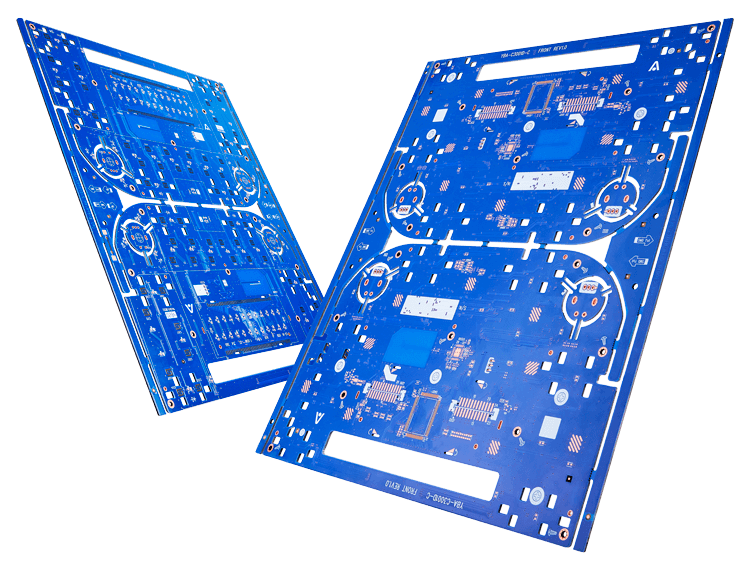Double Sided PCB’S
Dual Efficiency, Double the Possibilities: Unleash the Potential with
Double-Sided PCBs
- Applications: Automotive (2 Wheeler & 4 Wheeler), Telecom, Lighting, IoT, Consumables, etc.
- Number of layers: 2L / Double layer
- Materials: FR4, CEM3 (130 Tg, 150 Tg & 180 Tg) (Normal CTI & 600 CTI)
- Solder Mask Color: White, Blue, Black, Red & Green
- Delivery cycle time after approval of working Gerber from customers: Three working days

Introduction to Double-Layer Printed Circuit Boards (PCBs)
Welcome to the world of Double-Sided Printed Circuit Boards (PCBs), where innovation meets versatility. Double-sided PCBs represent a significant advancement in electronic engineering, offering a robust platform for designing complex electronic circuits. These boards feature conductive layers on both sides, allowing for increased component density and more intricate circuit designs compared to their single-layer counterparts. With components mounted on both sides of the board, double-sided PCBs optimize space utilization while maintaining compact dimensions, making them ideal for a wide range of applications in industries such as telecommunications, automotive, and consumer electronics. Whether you’re a seasoned engineer looking to push the boundaries of technology or a hobbyist embarking on a new project, double-sided PCBs provide the flexibility and performance required to bring your ideas to life.
Key Features of Double-Sided PCBs:
Dual-Sided Conductive Layers: Double-sided PCBs feature conductive layers on both sides of the substrate, providing ample space for component placement and interconnection.
Increased Component Density: With components mounted on both sides of the board, double-sided PCBs allow for higher component density and more intricate circuit designs compared to single-layer boards.
Enhanced Flexibility in Circuit Design: The dual-sided layout offers greater flexibility in designing complex circuits, enabling engineers to optimize signal paths and reduce signal interference.
Improved Signal Integrity: By distributing components across both sides of the board, double-sided PCBs help minimize signal crosstalk and impedance issues, leading to improved signal integrity and reliability.
Space Optimization: Double-sided PCBs optimize space utilization by accommodating components on both sides of the substrate, making them suitable for applications where size and weight are critical factors.
Versatility in Component Mounting: Double-sided PCBs support a wide range of surface-mount and through-hole component types, providing versatility in component selection and assembly techniques.
Cost-Effectiveness: While more complex than single-layer PCBs, double-sided PCBs are often more cost-effective than multi-layer boards, offering a balance between performance and affordability for many applications.
Suitability for Intermediate Complexity Circuits: Double-sided PCBs are well-suited for intermediate complexity circuits, making them a popular choice for a variety of electronic devices and systems in industries ranging from consumer electronics to industrial automation.
Ready to take your electronic projects to the next level?
